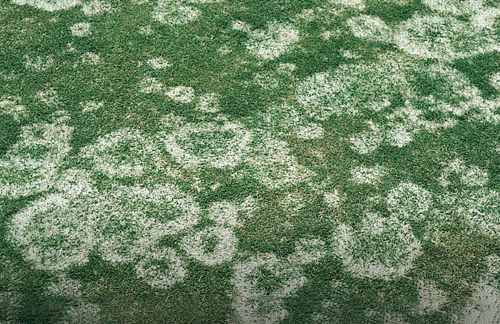I've posted here before. I've gotten advice. None of it is working.
To summarize:
- I want to understand what is happening exactly so I can eliminate and manage it, not just throw money at it randomly.
What I ended up doing was digging up all the brown yellow spots in their entirety and germinating with Scotts EZ Seed.
It mostly worked. I got 90% of the lawn green again within 2-3 weeks. Just a few spots wouldn't grow. I suspect birds ate the seeds in those areas but am not sure.
I have no idea what's going on or how to avoid it again. In particular, I want to know why nothing I do short of pulling up the brown/yellow grass spots in it's entirety
and replanting fixes the issue, tempoarily. Shouldn't Brown Yellow spots in most cases be able to be brought back under these conditions?
Here are the photos as it stands now. Again. The lawn was almost completely green again after the Scotts EZSeed came in a few weeks ago. And now this again.
20 minutes watering in each zone every other day. It's can't be or under or overwatering this time.
![Image]()
![Image]()
![Image]()
![Image]()
![Image]()
![Image]()
![Image]()
![Image]()
![Image]()
![Image]()
To summarize:
- I live on Long Island
- Mom, Dad and Sister really took care of lawn up until this past summer
- Now I needed to take over
- We have a local lawn maintenance company that mows weekly, fertilizes in Spring and Fall, and cuts the bushes and hedges
- But they don't address or attempt to fix spot problems. If I ask them to do something specific, they'll do it, but they don't recommend specifics.
- We have manual oscillating sprinklers. This year I layed out four of them to cover all four zones of the front lawn and put them on a B-Hyve timer.
- I started developing brown yellow spots all over the lawn.
- I tried watering less, watering more, mixing very tiny portions of Urea with large portions of water and throwing it on the brown/yellow areas
- But nothing gets those spots to return to green.
- I fertilized myself with Milorganite which is supposed to guarantee it won't burn the lawn. Well it burnt the lawn, bad. I followed the spreader and bag directions
- I've had a Arborist company come for a free evaluation.
- While they did not actually test the soil, they indicated they do not see any indications of a soil issue, grubs or disease.
- They didn't really think I needed aeration.
- They want to sign me up for their season package to pretty much just doing everything other than mowing. So that would leave me with two companies handling
- I want to understand what is happening exactly so I can eliminate and manage it, not just throw money at it randomly.
What I ended up doing was digging up all the brown yellow spots in their entirety and germinating with Scotts EZ Seed.
It mostly worked. I got 90% of the lawn green again within 2-3 weeks. Just a few spots wouldn't grow. I suspect birds ate the seeds in those areas but am not sure.
- My regular lawn maintenance company fertilized.
- And about 3 weeks later I've got brown yellow spots all over the lawn again and it hasn't been particularly hot during that period, it's been in the 70's and very low 80's.
I have no idea what's going on or how to avoid it again. In particular, I want to know why nothing I do short of pulling up the brown/yellow grass spots in it's entirety
and replanting fixes the issue, tempoarily. Shouldn't Brown Yellow spots in most cases be able to be brought back under these conditions?
Here are the photos as it stands now. Again. The lawn was almost completely green again after the Scotts EZSeed came in a few weeks ago. And now this again.
20 minutes watering in each zone every other day. It's can't be or under or overwatering this time.













